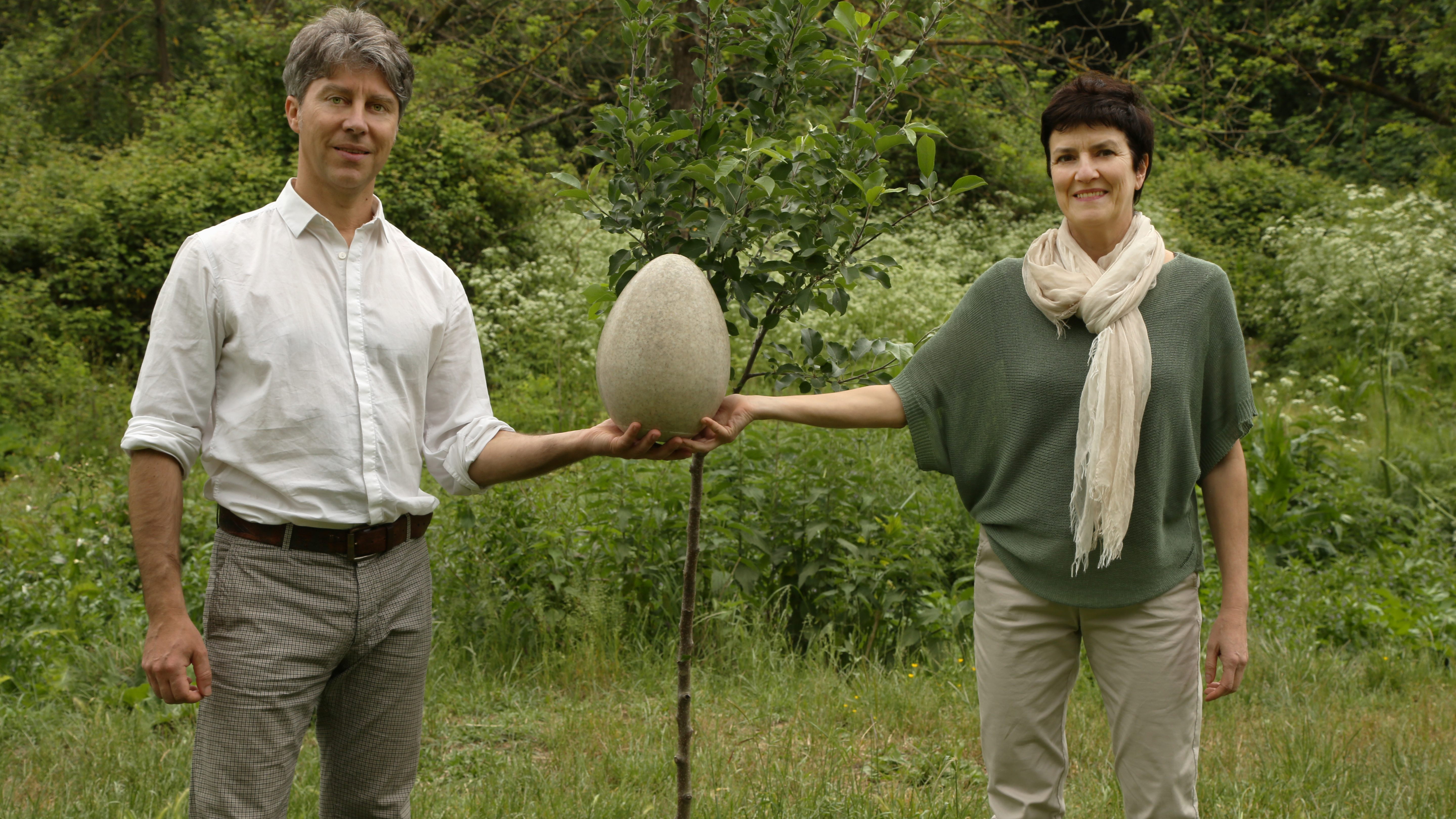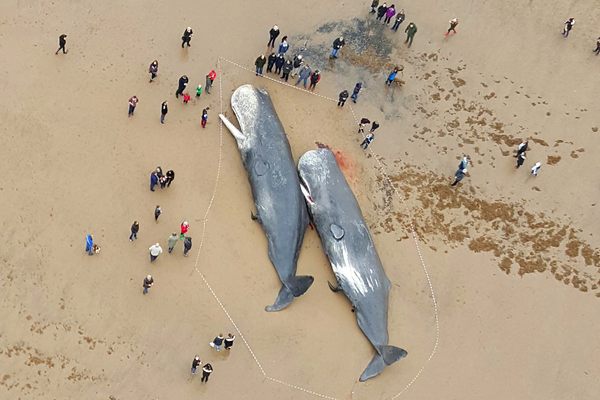Would You Like To Be Buried In A Giant Eco-Egg?
Capsula Mundi wants to make human burial green.

Your body goes in there. (All images courtesy of Capsula Mundi)
It’s a grim truth, but an inescapable one: at some point we will all return to the earth. Thanks to a new burial concept from Italian start-up Capsula Mundi, however, we may soon be able to do it in an ecologically sound fashion, becoming a seed for the planet to grow from. Or, more accurately, an egg.
Joining other non-traditional burial alternatives like “promession,” in which a body is frozen and vibrated into dust, Capsula Mundi aims to eliminate the traditional casket, which takes up a lot of space and can leach harmful chemicals and minerals into the soil.
“The material of the Capsula will support the mineralization process of the body into the soil,” a representative from Capsula Mundi told us. “This process brings us back to the cycle of life and nature.”
An environmentally conscious burial is nothing shocking, but Capsula Mundi has designed its eco capsule to be a visual metaphor for the project’s ethos.
If someone opts for a Capsula burial, they will be turned into a giant seed from which a tree will grow. Once someone passes away, their remains are placed in a biodegradable, egg-shaped container that is then buried and allowed to degrade naturally. The process works both with cremated remains or an intact body—the biodegradable seed container is simply smaller if the body has been cremated.
For a full-body burial, the deceased would be curled up into the fetal position inside the capsule, creating an evocative symbol of the connection between birth and death, and the rebirth that occurs as the remains feed plant growth on the surface. And also something out of a science fiction novel.

Capsula Mundi’s circle of death.
Once the giant death seed has been buried, a tree (ideally chosen by the deceased prior to their death) is planted on top of it. The nutrients from the decaying body and its container are then absorbed into the soil as a long-lasting fertilizer for the tree.
“The human body is mainly made up of nitrogen, sulfur, phosphorus, calcium, magnesium (in addition to carbon, hydrogen, and oxygen), indispensable substances for vegetation,” say the Capsula Mundi designers. As the tree grows above the burial site, it becomes a living headstone for the person buried underneath. The memorial arbor, which, in a very real way becomes made from the same stuff as the person underneath it, would then be entered into a central GPS system that would record the location of every Capsula Mundi tree, which would also be associated with parcel of data storage where loved ones could store digital memories.
While it might seem like a bizarre way to get buried in contrast to many traditional postmortem practices, the Capsula Mundi concept is hoped to be adopted by any culture or religion that would like to help the planet, without interfering or contradicting any of their beliefs or rituals.
The response to the project seems to be overwhelmingly positive so far. Capsula Mundi says that the company has already received thousands of requests for the process. But it may yet be a while before our graveyards are replaced with cemetery groves of memorial trees.

Capsula Mundi’s creators holding one of their cremain urns.
The Capsula Mundi creators Anna Citelli and Raoul Bretzel have been promoting their burial concept since 2015, doing TED talks and running a (sadly unsuccessful) recent Kickstarter campaign. The smaller capsule for cremains (made from “a bio-polymer extracted from seasonal plants”) has gone into production, but the full-body fetal seed is still in development, with the larger pod requiring more strenuous engineering due to the greater stresses it will have to bear. They hope to be offering the larger seed pod by 2018, but a number of regions have strict laws regarding burial practices that hinder the Capsula interment process.
Even with all the difficulties involved with trying to change people’s views on a subject as sensitive as death and dying, Capsula Mundi doesn’t plan on rolling over any time soon. So we may be looking forward to a future where we will visit our ancestors in huge forests of grave trees grown from biodegradable human eggs. It beats a pine box.












Follow us on Twitter to get the latest on the world's hidden wonders.
Like us on Facebook to get the latest on the world's hidden wonders.
Follow us on Twitter Like us on Facebook